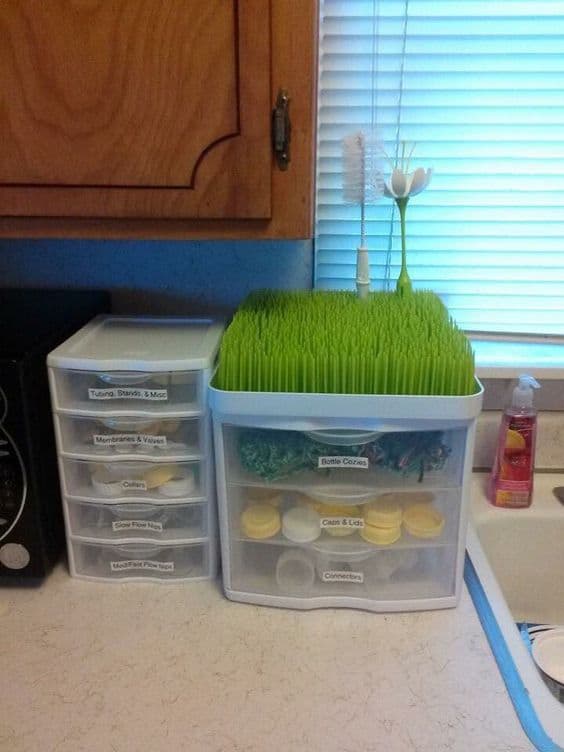How to Store Clean Baby Bottles: A Comprehensive Guide
Properly storing clean baby bottles is essential for maintaining your baby's health and ensuring the bottles are ready for use. This guide will provide you with clear and practical steps on how to store clean baby bottles safely and efficiently.
Why Proper Storage Matters
- Hygiene: Prevents contamination and ensures the bottles remain sterile.
- Convenience: Makes feeding time easier and more organized.
- Longevity: Keeps the bottles in good condition for longer use.
Steps to Store Clean Baby Bottles
1. Clean Thoroughly
Before storing, ensure the bottles are thoroughly cleaned. Use the following steps:
- Wash with Soap and Water: Clean the bottles, nipples, and any other parts with warm, soapy water.
- Sterilize: Boil the bottles or use a sterilizer to kill any remaining germs.
2. Dry Completely
Drying the bottles completely is crucial to prevent mold and bacteria growth.
- Air Dry: Place the bottles on a clean drying rack, ensuring they are upside down to allow water to drain out completely.
- Avoid Towels: Do not use towels as they can transfer germs to the bottles.

how to store clean baby bottles
3. Choose the Right Storage Location
Selecting a proper storage area is important for keeping the bottles clean.
- Closed Cabinet: Store bottles in a closed cabinet or drawer to protect them from dust and kitchen contaminants.
- Avoid Direct Sunlight: Keep the bottles away from direct sunlight, which can degrade the plastic.
4. Use Sterile Containers
Using sterile containers for storage ensures the bottles remain hygienic.
- Storage Boxes: Place the bottles in a clean, airtight storage box.
- Sterile Bags: Use sterile, resealable bags for an added layer of protection.
5. Organize Efficiently
Organizing the bottles helps maintain cleanliness and accessibility.
- Separate Parts: Store nipples, rings, and bottles separately to ensure they remain sterile.
- Label and Date: If using multiple sets of bottles, label them with the date they were last sterilized.
6. Regularly Inspect and Replace
Regular inspection helps maintain the safety and cleanliness of the bottles.
- Check for Wear and Tear: Inspect the bottles for cracks or damage and replace them if necessary.
- Routine Sterilization: Regularly re-sterilize the bottles to ensure they stay germ-free.

how to store clean baby bottles
Additional Tips for Storing Baby Bottles
1. Avoid Overcrowding
Overcrowding the storage space can lead to contamination.
- Ample Space: Ensure there is enough space between each bottle for air circulation.
- Dedicated Storage: Use a dedicated area solely for baby bottles to prevent cross-contamination.
2. Maintain a Clean Environment
Keeping the storage area clean is vital for maintaining bottle hygiene.
- Regular Cleaning: Clean the storage cabinet or drawer regularly.
- No Food Items: Do not store baby bottles near food items or other household products.
3. Use BPA-Free Containers
Ensure that all storage containers and bottles are BPA-free.
- Safe Materials: Check labels to confirm the materials used are safe for baby products.
- Quality Brands: Opt for reputable brands that guarantee BPA-free products.
Conclusion
Properly storing clean baby bottles is essential for your baby’s health and your convenience. By following these steps—cleaning thoroughly, drying completely, choosing the right storage location, using sterile containers, organizing efficiently, and regularly inspecting—you can ensure your baby’s bottles remain safe and ready for use. Remember to maintain a clean environment and avoid overcrowding to keep the bottles in the best condition possible.